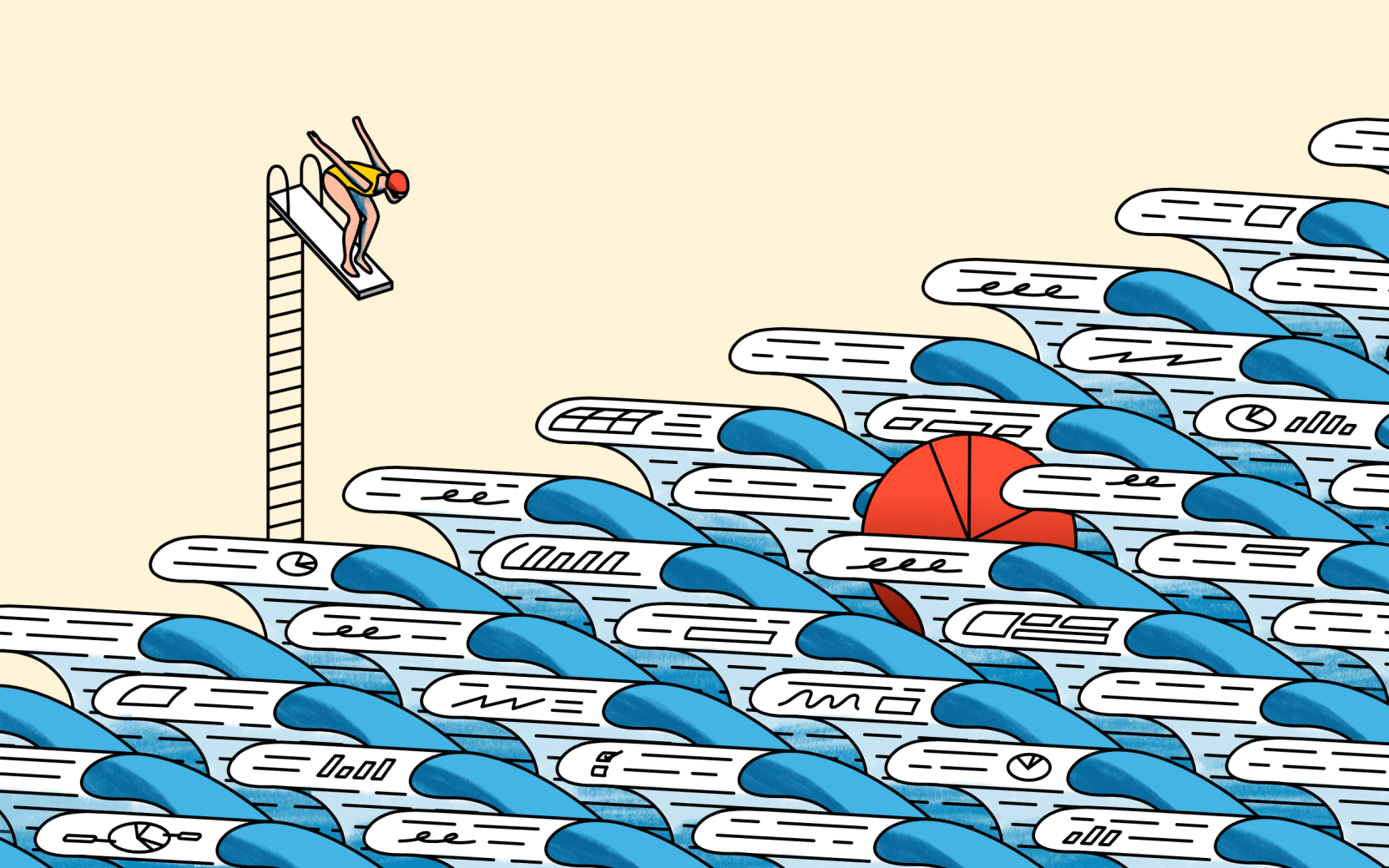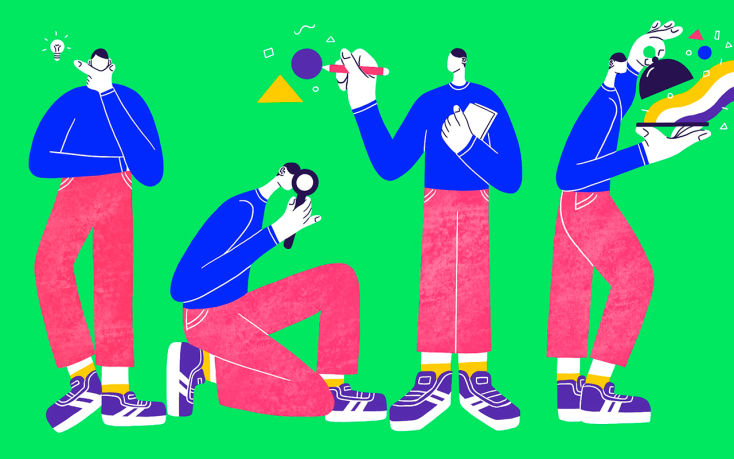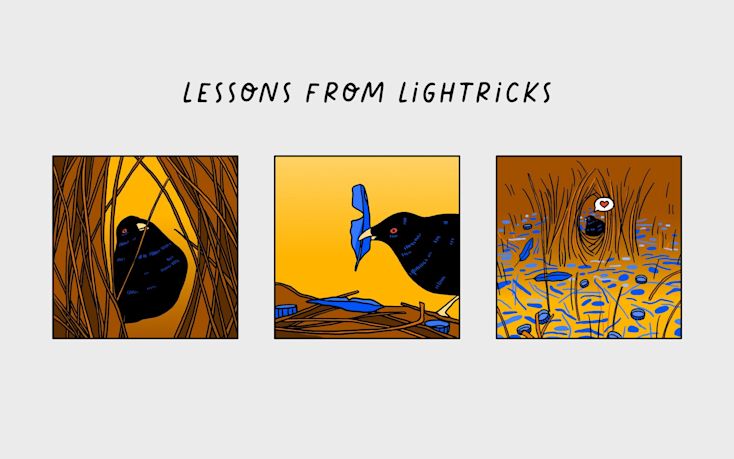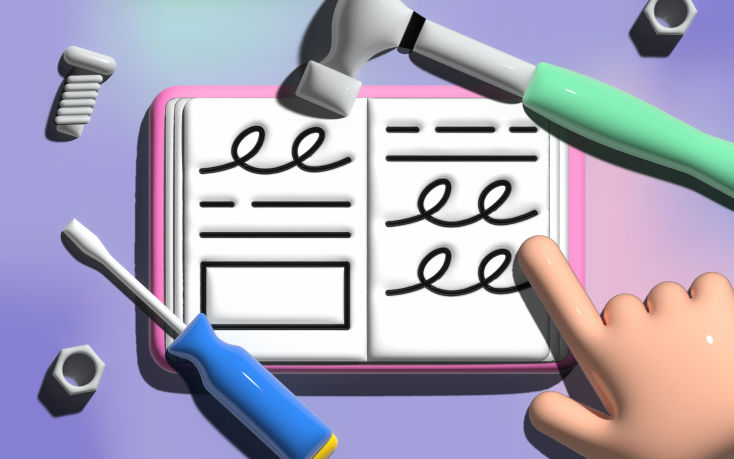Diving into research design 101

When I started learning about qualitative user research, there was only one way to do it in my mind. You spoke to a group of people and created insights based on the patterns your interviews displayed. I had heard about correlational, experimental research, and a few other types, but I didn’t think they were relevant to user research. So for a long time, I operated within this sphere until I questioned my research practices.
I was in a senior role and looking to move into management when I started to take stock of my research practice. The company I had joined had more rigorous expectations of researchers, with a strong theme of academia. This experience was different from my standard team-of-one scrappy start-up user research. So, I analyzed my past experiences to understand better and hone my practice.
I was reunited with all the different types of research out there and the various applications. So often, as researchers, we can get stuck in a methodology rut, always coming back to usability testing and 1x1 interviews. Now, there is a reason why those methods are so popular; they work and apply to solving many different types of problems. But, when we look a little closer, we can be more creative and thoughtful of all the different approaches available to us.
Different types of research
When auditing my current practice, I started right at the beginning by looking at my process behind research questions. I have struggled a lot with formulating and creating viable research questions in the past. As a curious person, I want to learn about everything. I also am a people-pleaser, so I want to be able to answer my stakeholders’ needs and questions. However, this isn’t necessarily a great formula for conducting the best studies.
While I was comfortable choosing methodologies and recruitment (I had made plenty of mistakes I had learned from by then), the beginning of each study was most stressful. I often procrastinated and went around in circles with a stakeholder request I was uncertain about. It was getting to be a real problem for me, so I decided to go back to the basics and relearn the different types of research.
We have the fundamental dichotomy between qualitative and quantitative research, and I got very comfortable with delineating between the two. When stakeholders asked me about behavior or large-scale trends, I knew I was looking at a quantitative study. But when they approached me with the “how” or “why” questions, I learned to think qualitative (or mixed methods) immediately. However, when it came down to a qualitative study, I struggled even though generative research is my favorite.
I had to go a step further in understanding the different types of research. In general, there are five types of research design:
Correlational research design requires two different groups as the researcher is trying to establish a relationship between two closely connected variables.
Descriptive research design is when a researcher tries to explain the “how” and the “why” of research. They are interested in describing the reasons or insights behind a specific research problem.
Diagnostic research design involves a researcher evaluating the underlying cause of a specific topic or phenomenon.
Quasi-experimental research design looks at a cause-and-effect of a situation where a researcher observes how one variable impacts another.
Explanatory research design uses a researcher’s ideas and thoughts on a subject to explore their theories further.
How do these types apply to user research?
I was obsessed once I had (a renewed) glimpse into research types. I wanted to deep dive into how these could apply to my work and, hopefully, make the stressful experience of beginning a study more manageable. In addition, I felt disconnected from my scientific and academic background, and this seemed like a great way to reincorporate these aspects.
I experimented with using some of these different research types in my studies and learned a lot from the experience. However, before we dive into examples of applying these types of research design to user research, I want to briefly touch on correlation and causation. These concepts were a nightmare for me to wrap my head around.
Correlation means there is an association between two variables. When one variable changes, so does the other one. They covary, which means they change together, and if the two variables are correlated, you can predict that when one variable changes, so will the other. There are three types of correlation:
Positive correlation: The variables change in the same direction, so when one variable increases, so does the other. A typical example of this is when height increases, weight increases.
Negative correlation: The variables change in opposite directions, so when one variable decreases, the other increases. For example, when people see their friends more often, feelings of loneliness decrease.
Zero correlation: There is no relationship between the variables. For example, owning a cat has no impact on your height.
Causation means that a change in one variable causes a change in another variable. So, one variable changing causes a change in another variable. An example of causation would be that more people get sunburnt as the weather gets hotter. So, the hotter, sunnier weather caused an increase in sunburns.
You can often hear the phrase correlation does not mean causation, making these concepts even more confusing. Even if there is a correlation between two variables, we cannot conclude that one variable causes a change in the other. This relationship could be coincidental, or a third factor (confounding variable) may be causing both variables to change.
Let’s take the example of causation above. The hotter, sunnier weather causes:
People to get more sunburns
People to buy more ice cream
Sales in air conditioners to rise
Now, if we were to look at correlation, we can see a positive correlation with:
The more sunburnt people, the increase in ice cream sales
An increase in ice cream sales and an increase in air conditioner sales
More sunburnt people and an increase in air conditioner sales
Now, sunburns don’t cause people to buy more ice cream or air conditioners. So, while they are positively correlated, we can’t attribute causation.
Now that’s out of the way, let’s see how we can apply this knowledge to user research. I won’t cover each type of research design as they aren’t all applicable to user research.
Descriptive research design
Descriptive research designs help provide answers to the questions:
Who
What
When
Where
How
Descriptive research describes the situation of the research problem but does not answer “why” a problem is happening. Descriptive research can be qualitative or quantitative, depending on which variables you are trying to answer. For example, when defining the “how,” you look at the process, so qualitative research can help you understand how someone is doing something. The who, what, when, and where can be understood at a small level with a qualitative study but would have to be followed up by quantitative research to generalize to a broader audience.
A customer journey map is an excellent example of a descriptive study as you look at all of these separate components. First, you begin with 1x1 interviews to understand the above questions, and then you survey a broader audience to generalize your findings.
Explanatory research design
An exploratory design is conducted about a research problem when there is little past research. The focus is on gaining insights about unknown topics to make further recommendations. Explanatory research design answers the “how” and “why” questions. So, understanding why people act in a particular way or feel unsatisfied about an experience.
The most common explanatory research design method is 1x1 interviews, as they allow us to probe and ask these why questions.
Correlational research design
With correlational designs, you can get a clear picture of characteristics, trends, and relationships as they exist in the real world. However, you can’t conclude cause and effect (as discussed above). Nevertheless, correlational research is excellent for understanding large-scale behavior questions, such as:
Whether the longer somebody spends on a particular page, the more they spend at checkout.
Are people uninstalling your app because of your weekly push notifications? Or is some other factor at play?
Whenever you are using correlational design, consider correlation versus causation as well.
Overall, there are many different ways we can design our user research studies, which can help us uncover new ways to approach problems and questions. When I dove further into research design, it invigorated me and helped me immensely when thinking through approaches, especially to more complex problems.

Users report unexpectedly high data usage, especially during streaming sessions.
09:46AM24 Sep, 2024
Users find it hard to navigate from the home page to relevant playlists in the app.
11:32AM9 Mar, 2024
It would be great to have a sleep timer feature, especially for bedtime listening.
15:03PM13 May, 2024
I need better filters to find the songs or artists I’m looking for.
4:46PM15 Feb, 2024Log in or sign up
Get started for free
or
By clicking “Continue with Google / Email” you agree to our User Terms of Service and Privacy Policy


